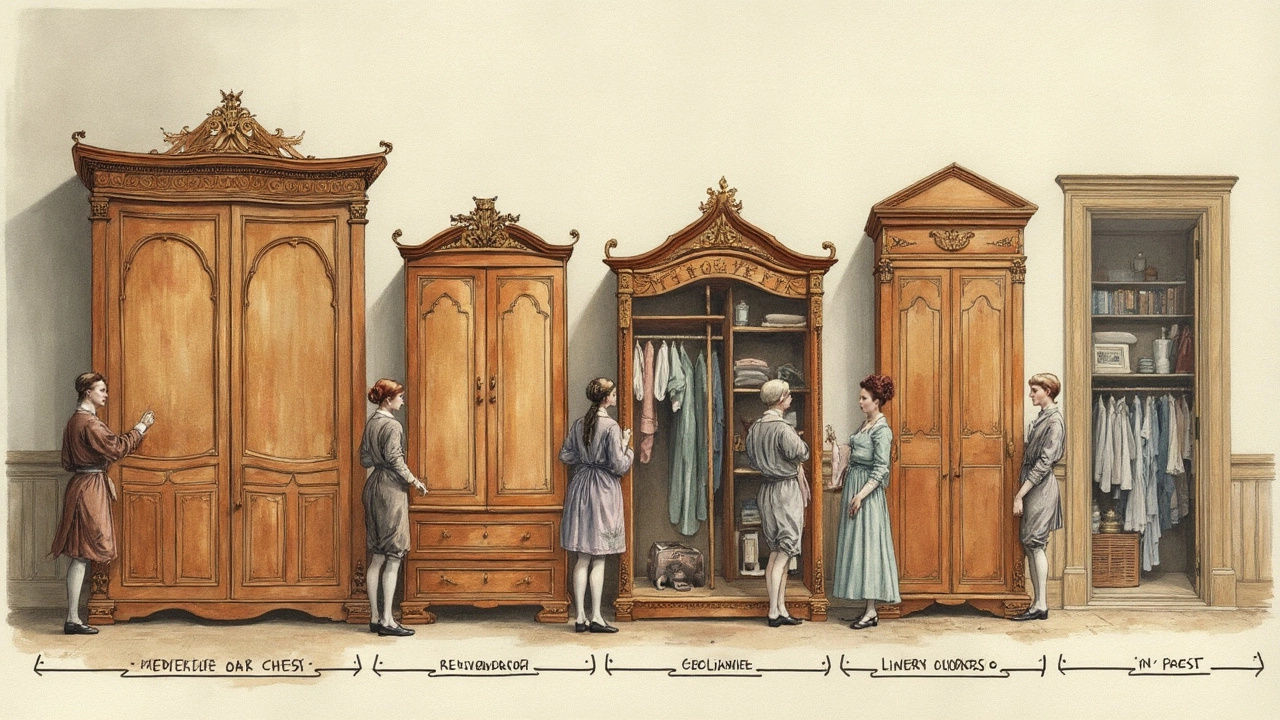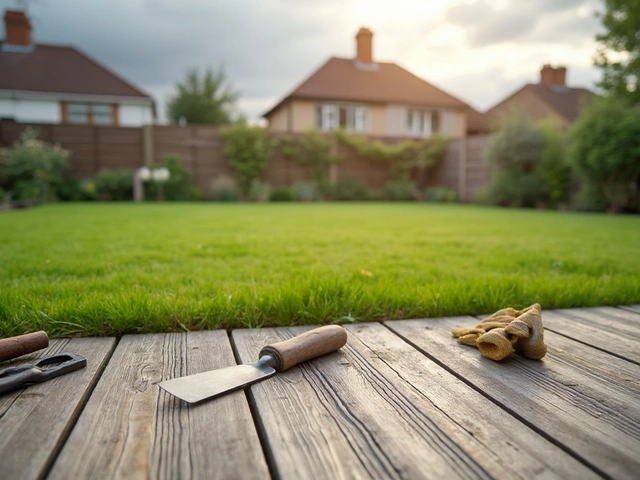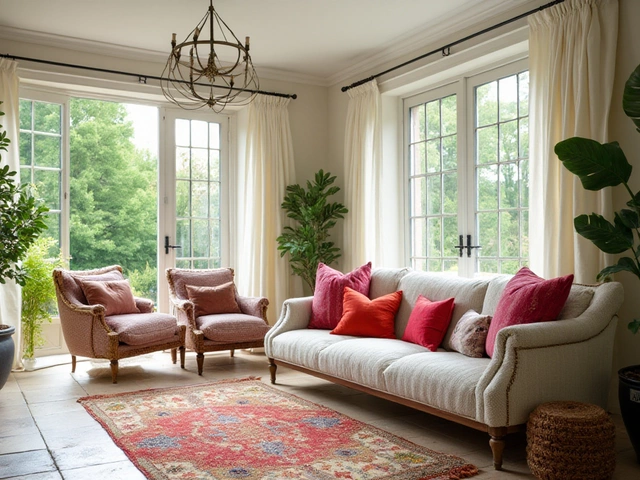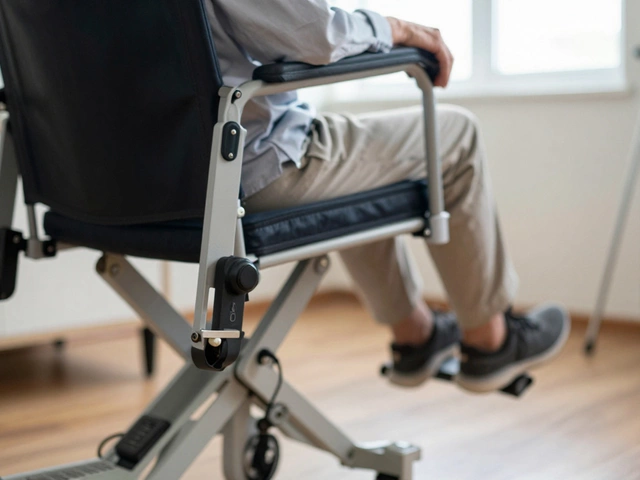 22
May,2025
22
May,2025
It’s weird to think, but not that long ago, the word 'wardrobe' wasn’t even a thing. Back in the day, storing clothes wasn’t about neat closets—people often relied on large chests or big wooden cupboards. So, what did they actually call these furniture pieces before 'wardrobe' became the go-to word?
Turns out, the old name that comes up most often is 'armoire.' That’s a word you still hear if you spend any time in vintage shops or European antique stores. An armoire usually meant a free-standing cabinet, often with doors and sometimes a drawer or two. But it’s not the only name—different countries and time periods had their own terms. There's more to the story than just a fancy French word.
- Why Did People Need Wardrobes?
- What Was the Old Name for Wardrobe?
- The Rise of the Armoire
- Different Old Names Across Countries
- Why Did Names Change?
- Antique Storage: Fun Facts and Tips
Why Did People Need Wardrobes?
Back before closets were built into every bedroom, storage was a real headache. Most people just had a wooden chest at the foot of their bed to keep extra clothes, blankets, or random stuff tucked away. But as wardrobes grew in size—think frilly dresses, jackets, and all sorts of gear—those chests just couldn’t keep up.
By the late Middle Ages, especially for wealthier folks, clothes became fancier and bigger. Hanging them meant less wrinkling and fewer moths. That's when the demand for something more upright, like a tall cabinet, started. These early cabinets weren’t just for looks—people needed somewhere to hang their new threads as social life and fashion kicked off. Plus, if you could afford fancy clothes, you wanted everyone to know you had a special spot to keep them.
Fast-forward to the 18th and 19th centuries, and even regular families needed better storage. Houses were getting a bit bigger, and that led to the rise of the wardrobe as a must-have item. If you check out home inventories from the 1800s, wardrobes (or their old names) pop up in a lot of households.
The whole need for wardrobes also lines up with social trends. Here are a few reasons why people traded in their trunks for standing storage:
- Fashion exploded: More people owned more clothes, and not just one Sunday outfit.
- Hygiene: Hanging up clothes kept them from getting musty or bug-infested.
- Practicality: It’s just easier to grab a shirt off a hanger than dig through a pile in a chest.
Here’s a cool snapshot from a household survey in England around 1850:
| Year | Households (sampled) | Homes With Wardrobe or Equivalent |
|---|---|---|
| 1820 | 100 | 21 |
| 1850 | 100 | 58 |
That’s a solid jump in wardrobes taking over from old chest-style storage. As lives changed, so did furniture—simple as that.
What Was the Old Name for Wardrobe?
So, what did folks use before anyone started saying wardrobe? One of the most common terms you'll see is "armoire." This word comes from France and has been around since at least the 16th century, showing up in old estate sales and catalogs. But there’s more than just one old name floating around, depending on time period and country.
In England, the earliest storage for clothes was just a chest—sometimes called a "coffer" or "dower chest." These were big, heavy boxes with a simple lid. People chucked their best clothes and linens in there to keep them clean and safe. As houses got bigger, so did the furniture, and these chests slowly grew into cabinets or cupboards (another old-school word for a storage piece with doors).
Here’s a quick rundown to make things clear:
- Armoire: Freestanding tall cabinet, usually from France, with doors (sometimes with drawers below).
- Coffer: Heavy wooden box with a lid, used in medieval times for storing clothes and valuables.
- Press: In England, a "linen press" or "clothes press" was a tall cabinet for folded garments and linens.
- Chesterfield: Rare term, sometimes used for fancy chests in the 1700s, though now it means a sofa!
Here's a table that lays out when these names were common:
| Name | Origin/Country | Typical Use | Peak Time Period |
|---|---|---|---|
| Armoire | France | Hanging and folding clothes | 1600s-present |
| Coffer | Europe | Bedding, clothes, valuables | 1100s-1500s |
| Linen Press | England | Folded garments, linens | 1700s-1800s |
| Cupboard | Europe | Household storage | 1400s-present |
Most people today use "wardrobe" for both built-in and freestanding pieces, but if you spot an old armoire or chest at your grandma’s house or a flea market, now you’ll know exactly what you’re looking at. Not every old wardrobe has a hanger pole. Some just had shelves or even a key for locking up Sunday’s best.
The Rise of the Armoire
So, before most folks even heard about a wardrobe, the armoire was holding it down as the main furniture for clothes storage. The word “armoire” came from the French, and around the 16th century, it meant a standing cupboard for storing arms. Pretty quickly though, people started using it for clothes, bedding, and all sorts of household stuff.
By the 1700s, every decent house in France and lots of other European countries had an armoire. It was a sign you were doing well—these things were big, heavy, and made from solid wood like oak or walnut. Some of them got fancy carvings and metal work. Families would sometimes pass them down through generations.
The thing about an armoire is that it was versatile. It had doors to keep out dust and moths, sometimes shelves for folded clothes, and sometimes rods for hanging garments. Here’s a real-world timeline to see how it caught on:
| Year/Period | Development |
|---|---|
| 1400s | Large chests mainly used for storage; armoires start as weapon cupboards |
| 1500s | French nobility turn armoires into showpieces for linens and clothing |
| 1700s | Armoires become standard in many European homes for clothes (especially in France) |
| 1800s | Armoire designs spread across Europe and America; more people use them for everyday clothes |
Today, if you see an armoire at an antique shop, you’re not just looking at old furniture—you’re looking at what used to be known as the wardrobe. And honestly, a good armoire can still outlast most of the cheap closets on the market right now.
- If you buy an old armoire, check for solid wood. Particle board versions are newer and not as tough.
- Look out for adjustable shelves if you want to use it for more than just hanging clothes.
- Want more storage in a small place? Armoires sometimes fit better than modern sliding-door wardrobes.

Different Old Names Across Countries
Not every country settled on "wardrobe" right away. Take France, for instance—what Brits called a robe or a cupboard, the French called an armoire. Basically, an armoire is just a tall, moveable cabinet with shelves and sometimes a rod to hang clothes. Even today, if you shop for antiques in Paris, expect to see a lot of furniture labeled as armoire, often hand-carved and massive.
Meanwhile, in England, people didn’t have walk-in wardrobes until pretty recently. They mostly used something called a "press"—short for "clothes press." The press looked like a cupboard, usually with solid doors and maybe a drawer or two underneath. It’s the kind of thing you might spot in an old English manor—solid oak, chunky doors, heavy as a small car. Some regions also used “closet” or “coffer” for storing special clothes and linens. Germany had its “Kleiderschrank,” and Italians liked the word “guardaroba.” They all boiled down to the same purpose: store clothes, keep moths out, and show off just a bit.
Here’s a quick table to keep track of what countries called their wardrobes back in the day:
| Country | Old Name | Era Most Common |
|---|---|---|
| France | Armoire | 17th Century onward |
| England | Press / Clothes Press | 16th-19th Century |
| Germany | Kleiderschrank | 18th Century onward |
| Italy | Guardaroba | Late Middle Ages (14th Century) onward |
| Scandinavia | Skåp | 18th-19th Century |
In an old furniture guide, historian Simon Jenkins wrote,
"No two nations ever agreed on the best way to store their clothes. What the English kept in a press, the French locked away in a gilded armoire, each a giant among household furniture."
If you’re out treasure-hunting at flea markets or estate sales in Europe, recognizing these names is handy. Some sellers still use old terms, especially if the piece is legit antique. Knowing the difference can help you avoid overpaying—or spot a real gem everyone else overlooked.
Why Did Names Change?
Names for furniture don't stick around forever. Most old words change when habits, homes, and languages shift. In the case of the wardrobe, a few clear reasons caused the switch from older names like 'armoire' and 'press' to what we use today.
Let’s start with houses themselves. Until the late 1800s, built-in closets were super rare. People used huge wooden cupboards or chests, and every country had its own word for them. But as homes got bigger and styles changed, those traditional chests started to seem clunky. People needed furniture that worked for all their new types of clothing and fit the look of modern bedrooms.
Language played a part, too. The word 'wardrobe' comes from old French: 'warder' (to guard) and 'robe' (clothes). By the 14th century, 'warderobe' meant a royal or noble's clothing room in England. As English spread and lifestyles got fancier, 'wardrobe' shifted from meaning a storage room to the furniture itself. In France, 'armoire' stuck, but English speakers wanted their own word.
Manufacturing also made a difference. During the Industrial Revolution, mass production made slim standing wardrobes possible for more folks, not just the rich. Furniture makers began advertising new names to set their stuff apart.
- ‘Press’ was used in Ireland and Scotland for storage cupboards
- ‘Chifforobe’ popped up in the American South: a mix of chiffonier and wardrobe
- ‘Closet’ slowly became common in the US, but meant a 'private room' in Britain for ages
Check out this quick breakdown of the name shifts over time:
| Term | Where/When Used | Rough Meaning |
|---|---|---|
| Armoire | France, 16th century-present | Large standing cabinet |
| Press | Scotland/Ireland, 17th-19th century | Closet or cupboard |
| Wardrobe | England, from 1300s | Clothes storage (room or furniture) |
| Chifforobe | US South, 1900s | Combination drawer and hanging space |
| Closet | US, 20th century | Built-in clothes cupboard |
So yeah, these shifts happened because language won't sit still—neither will our clothes or how we keep them!
Antique Storage: Fun Facts and Tips
Old wardrobes—or armoires, as they were often called—have some wild history behind them. Did you know the earliest versions were straight-up chests before upright cabinets even existed? People would keep everything from clothes to weapons in big wooden boxes at the foot of the bed. Once vertical storage caught on, those big cabinets became a status symbol. Kings and rich folks decked out their wardrobes with carvings and expensive wood, showing off their style and wealth.
Here’s a cool stat: in 18th-century France, wardrobes (like armoires) were often made from solid oak and could weigh more than 300 pounds. No way you’re sliding that across a room by yourself. Even now, big armoires still grab attention in any space—sometimes they even become family heirlooms.
- Some antique armoires use secret panels or false bottoms. These were handy for hiding valuables back in the day—and a fun surprise if you’re shopping at thrift stores.
- The word “armoire” comes from the Latin 'armorium'—a place to store armor. Over time, it switched from weapons to clothes as lifestyles changed.
- Notice tiny holes or patterns in old wooden wardrobes? That could be proof of woodworm—totally normal, but check that it’s not still active if you buy an antique one.
- Paint wasn’t just for looks. In the 1700s, some cabinets got a good coat of milk paint as a cheap way to protect against bugs and rot.
Spotting a true antique goes way beyond looks. Check the inside for hand-cut dovetail joints—machine-made ones are usually newer. Old wardrobes rarely used screws; they relied on wooden pegs or handmade nails. If the back panel is made from one big, solid plank instead of a bunch of little boards, that’s usually a good sign you’ve got something special.
| Antique Wardrobe Feature | Typical Age Range | What to Look For |
|---|---|---|
| Hand-cut dovetails | 1700s–1800s | Irregular, chunky joinery |
| Milk paint finish | 18th century | Matte, chalky feel |
| Secret compartments | 1700s–1900s | Hidden panels or false backs |
| Wooden pegs | Prior to 1850 | No screws in joints |
Want to use an antique wardrobe today? Store extra bedding, board games, or even use it as a quirky pantry. Just toss in some cedar blocks to keep things fresh. If you spot a deal at an estate sale, check for sturdy doors and dry wood first. Bring a friend to help—these things are heavier than they look!




